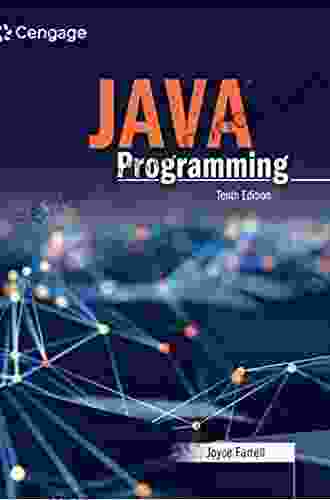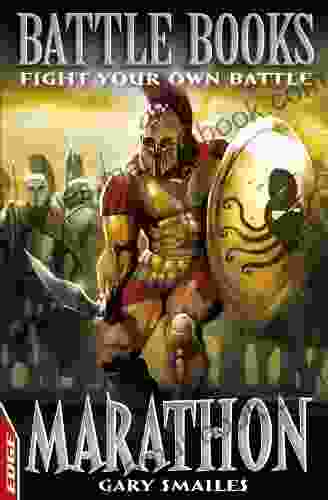Java Programming: The Comprehensive Guide for Beginners

Java is a versatile and powerful programming language renowned for its numerous applications across various industries. Its object-oriented nature and platform independence have made it a popular choice for developing enterprise-level software, mobile applications, and web-based systems. This comprehensive guide will provide a comprehensive overview of Java programming, covering its foundational concepts, syntax, and practical applications. Whether you're a complete novice or looking to enhance your programming skills, this article will serve as a valuable resource.
1. Understanding the Basics of Java
1.1 What is Java?
Java is an object-oriented, class-based programming language developed by Sun Microsystems (now Oracle) in 1995. It was designed with the principle of "Write Once, Run Anywhere" (WORA),meaning that code written in Java can run on any platform that supports the Java Virtual Machine (JVM).
4.4 out of 5
| Language | : | English |
| File size | : | 41892 KB |
| Screen Reader | : | Supported |
| Print length | : | 870 pages |
1.2 Core Concepts of Java
- Object-Oriented Programming (OOP): Java embraces the OOP paradigm, where programs are structured around objects rather than functions. Objects represent real-world entities, encapsulating data and methods that operate on that data.
- Classes and Objects: A class is a blueprint that defines the structure and behavior of an object. Objects are instances of classes, containing their data and methods.
- Inheritance: Inheritance allows classes to inherit properties and methods from their parent classes, enabling code reusability and extensibility.
- Polymorphism: Polymorphism allows objects of different classes to respond to the same method call differently, based on their specific implementation.
- Exception Handling: Java provides robust exception handling mechanisms to identify and manage errors or unexpected conditions during runtime.
2. Java Syntax
2.1 Data Types and Variables
Java offers a range of data types to represent different types of data, such as primitives (e.g., int, double, boolean) and reference types (e.g., String, Object). Variables are used to store values of specific data types.
2.2 Control Structures
Conditional statements (if-else) and loops (for, while, do-while) are used to control the flow of execution in Java programs. These structures allow programmers to execute code based on conditions and iterate through data collections.
2.3 Methods
Methods are blocks of code that perform specific tasks. They can be defined within classes or as standalone functions. Methods take input parameters and may return a value based on their implementation.
2.4 Arrays
Arrays are used to store collections of similar data types. Java supports both primitive arrays and arrays of objects. They allow efficient storage and manipulation of data elements.
2.5 Input and Output
Java provides classes to facilitate input and output operations. The Scanner class is used to read input from the console, while the PrintWriter class is used to write output to files or the console.
3. Java Development Environment
3.1 Java Development Kit (JDK)
The JDK is the official Java development environment from Oracle. It includes the Java compiler (javac),the Java Runtime Environment (JRE),and various development tools and utilities.
3.2 Integrated Development Environments (IDEs)
IDEs like Eclipse, IntelliJ IDEA, and NetBeans provide a comprehensive set of features for Java development. These include code editors, debuggers, and project management tools, simplifying the development process.
4. Applications of Java Programming
4.1 Enterprise Software Development
Java's robust and scalable nature makes it ideal for developing large-scale enterprise software applications. Its ability to integrate with various databases and frameworks allows for efficient data management and application development.
4.2 Mobile Application Development
Java forms the basis of Android, the most popular mobile operating system. Android applications are written in Java using the Android SDK, providing access to a wide range of mobile device features.
4.3 Web-Based Systems
Java is used extensively in web-based systems, including server-side applications, web services, and web application frameworks. Its cross-platform compatibility and support for various web technologies make it a versatile choice for web development.
4.4 Cloud Computing
Java plays a significant role in cloud computing, with frameworks like Spring Boot and cloud computing platforms like AWS and Azure leveraging Java's capabilities for cloud-based application development and deployment.
5. Benefits of Java Programming
5.1 Object-Oriented Approach
Java's object-oriented approach enhances code reusability, maintainability, and extensibility. It promotes the principles of encapsulation, inheritance, and polymorphism, leading to well-structured and flexible software designs.
5.2 Platform Independence
Java's WORA principle ensures that code written in Java can run on any platform that supports the JVM. This portability allows developers to create cross-platform applications that can be deployed on different operating systems and devices.
5.3 Robust and Secure
Java features robust exception handling and memory management mechanisms. Its strong type system helps prevent common programming errors, while its security features protect against malicious attacks and data breaches.
5.4 Large Community and Ecosystem
Java boasts a vast community of developers and an extensive ecosystem of libraries and frameworks. This abundance of resources and support facilitates rapid application development and problem-solving.
6.
Java programming has become an indispensable tool for software developers across industries. Its object-oriented nature, platform independence, and robust features make it an ideal choice for developing a wide range of applications. This comprehensive guide has provided an overview of the foundational concepts, syntax, and applications of Java programming. By delving deeper into Java's capabilities and exploring practical projects, you can unlock the full potential of this versatile and powerful programming language.
4.4 out of 5
| Language | : | English |
| File size | : | 41892 KB |
| Screen Reader | : | Supported |
| Print length | : | 870 pages |
Do you want to contribute by writing guest posts on this blog?
Please contact us and send us a resume of previous articles that you have written.
 Top Book
Top Book Novel
Novel Fiction
Fiction Nonfiction
Nonfiction Literature
Literature Paperback
Paperback Hardcover
Hardcover E-book
E-book Audiobook
Audiobook Bestseller
Bestseller Classic
Classic Mystery
Mystery Thriller
Thriller Romance
Romance Fantasy
Fantasy Science Fiction
Science Fiction Biography
Biography Memoir
Memoir Autobiography
Autobiography Poetry
Poetry Drama
Drama Historical Fiction
Historical Fiction Self-help
Self-help Young Adult
Young Adult Childrens Books
Childrens Books Graphic Novel
Graphic Novel Anthology
Anthology Series
Series Encyclopedia
Encyclopedia Reference
Reference Guidebook
Guidebook Textbook
Textbook Workbook
Workbook Journal
Journal Diary
Diary Manuscript
Manuscript Folio
Folio Pulp Fiction
Pulp Fiction Short Stories
Short Stories Fairy Tales
Fairy Tales Fables
Fables Mythology
Mythology Philosophy
Philosophy Religion
Religion Spirituality
Spirituality Essays
Essays Critique
Critique Commentary
Commentary Glossary
Glossary Bibliography
Bibliography Index
Index Table of Contents
Table of Contents Preface
Preface Introduction
Introduction Foreword
Foreword Afterword
Afterword Appendices
Appendices Annotations
Annotations Footnotes
Footnotes Epilogue
Epilogue Prologue
Prologue James E H Fitzgerald
James E H Fitzgerald David North
David North Thomas Platz
Thomas Platz Geoff Johns
Geoff Johns Sara Gay Forden
Sara Gay Forden Joshua Lawrence Chamberlain
Joshua Lawrence Chamberlain Gareth Huw Davies
Gareth Huw Davies Jeroen Mulder
Jeroen Mulder Robert Tracy Mckenzie
Robert Tracy Mckenzie M S Cross
M S Cross Judith Kalman
Judith Kalman Lisa A Kurtz
Lisa A Kurtz Kerry J Donovan
Kerry J Donovan Alice Oseman
Alice Oseman Rao Garuda
Rao Garuda Jennifer Tremblay
Jennifer Tremblay Pavon James
Pavon James Jason Hanrahan
Jason Hanrahan Andy Priestner
Andy Priestner Dara R Fisher
Dara R Fisher
Light bulbAdvertise smarter! Our strategic ad space ensures maximum exposure. Reserve your spot today!
 Javier BellFollow ·5.8k
Javier BellFollow ·5.8k Roy BellFollow ·17.2k
Roy BellFollow ·17.2k Trevor BellFollow ·18.4k
Trevor BellFollow ·18.4k Greg CoxFollow ·7.4k
Greg CoxFollow ·7.4k Ed CooperFollow ·7k
Ed CooperFollow ·7k Sam CarterFollow ·5.2k
Sam CarterFollow ·5.2k Dawson ReedFollow ·18.6k
Dawson ReedFollow ·18.6k Francis TurnerFollow ·15.6k
Francis TurnerFollow ·15.6k

 David Mitchell
David MitchellMy Surly Heart: Poetic Expressions of Unrequited Love...
In the annals of...

 Jake Carter
Jake CarterBleach Vol. 50: The Six Fullbringers - A Comprehensive...
Bleach Vol. 50, titled "The Six...

 Edward Reed
Edward ReedThe Art of Simple Food II: A Masterclass in Culinary...
In an era of culinary excess, where meals...

 Jarrett Blair
Jarrett BlairThe Easy Ingredient Ketogenic Diet Cookbook: Your Gateway...
The ketogenic diet,...

 Larry Reed
Larry ReedThe Very Edge Poems Polly Alice Mccann: A Poetic...
An to 'The Very...

 Sidney Cox
Sidney CoxThe Keys of Death and Hades: Unlocking the Epic of...
In the realm of mythology...
4.4 out of 5
| Language | : | English |
| File size | : | 41892 KB |
| Screen Reader | : | Supported |
| Print length | : | 870 pages |












